Bikelock Holmes and the hunt for Sir Arthur

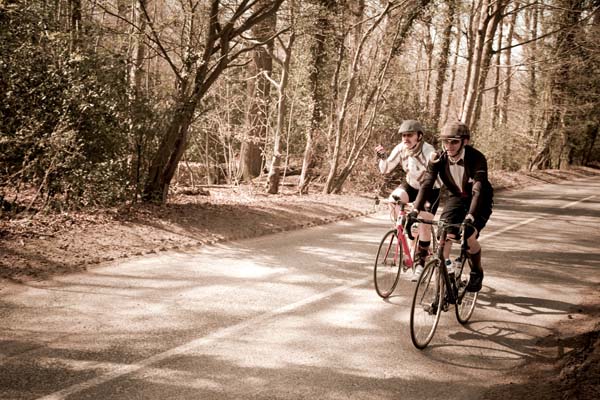
Words: Matt Lamy (and Sir Arthur Conan Doyle); Photos: Daniel Gould
“This British weather is so insufferably boring Matson,” Bikelock Holmes called to me from the drawing room window of our apartments at 221b Nodder Street.
For two months now Holmes, the finest and most dynamic mind to ever master two wheels, had been languishing in the kind of stupor that would, from time to time, overwhelm him with a despair that left his body and mind drained. Two months of nothing but the occasional turbo session and whatever faint rays the sun cared cast into our rooms had pasted his skin with a wintery pallor and left his frame frail.
As his friend, and more to the point, the chronicler of his two-wheeled exploits, I was fully aware that only one thing could awaken him from this extended residence in personal limbo: a ride. Little did I know, at that very moment the perfect solution was crossing our threshold.
“There is a gentlemen to see you,” young Shrubby our page-boy informed us.
“Well send him up then,” Holmes barked. “Perhaps this visitor can offer some manner of distraction from the gloom.”
The need for tweed
Get The Leadout Newsletter
The latest race content, interviews, features, reviews and expert buying guides, direct to your inbox!
Within seconds the object of our hopeful wishes bumbled his way into the room. In most respects he was an unremarkable specimen, aged somewhere between 40 and 50, although a clear complexion belied his years. His manner of apparel was of far more interest. Our prospective client was covered top to toe in a rare tweed, with a vintage cycle cap upon his head. The fellow noticed my line of sight and quickly removed his headwear apologetically.
“Mr Holmes, it is so very good of you to see me, I…” he began with more than a hint of nervous tremor.
“You are Luke Edwardes-Evans, are you not?” Holmes interjected. “Or, to give you your proper title, Lord Tonbridge, deputy editor of the journal Bicycling Most Certainly Not Inactive.”
Before the fellow could expel any more utterances - judging by his perplexed expression, no doubt to enquire how my companion had alighted on such enlightenment - Holmes’s intellect was in full flight.
“Three things tell me all I needed to reach that deduction,” he continued. “The cap that rested upon your pate until but a moment ago was a souvenir item dispensed only to bicycle journalists covering the 1995 Tour de France - meaning you must have been active in that profession, if one can call it such, then. Secondly, no other cycle correspondent of whom I am aware would ever deign to wear tweed in public. Finally, the fleshy, pampered surfaces of your finger pads put the seal on your aristocratic inheritance. It’s nothing more than a trick of perception your lordship, a mere observational trifle. Now what is it that I can do for you?"
Lord Tonbridge sat down, head in his hands, and recounted one of the sorriest tales to have ever been witnessed by those four walls. A cad by the name of Lamy had promised a magazine article of significant wordage, but reneged on the deal at the last moment. Now, with just a matter of days until the presses began to run, his lordship was at his wit’s very end. He turned to the only name in London capable of rescuing such a predicament, Bikelock Holmes.
“I’m afraid I am not much of a writer,” Holmes explained. “It is true I have composed the occasional monograph about the chemical construction of chain lubricants and other matters of scientific interest. However, if you permit my good friend Dr John Matson here to pen the piece, I think we can have a ride story with you by Tuesday.”

An adventure begins
His lordship left us ever grateful, and the next morning we were in the carriage of a south-westerly train, heading for the small Surrey town of Farnham.
“Farnham, I’m sure you recall Matson, is where we had the Adventure of the Solitary Cyclist,” Holmes chatted excitedly. “I thought we could start here and have an invigorating pedal through some venues of our previous southern county expeditions to finish at Crowborough – an area I rather fancy retiring to once my work in London is done.”
Disembarking at Farnham, Holmes’s eyes shone, and his cheeks were flushed with the exhilaration of a master craftsman who sees his work lie before him. A very different creature, this active, alert man from the introspective and pallid dreamer of Nodder Street. I felt as I looked upon that supple figure, alive with nervous energy, that it was indeed a strenuous day that awaited us.
Soon I realised how right that prophecy was. Following an early foray between open fields and under leafed canopies, we reached the bottom of our initial ascent towards Hindhead. Above, the first faint shoots of green were breaking out upon the elms and the sticky spearheads of the chestnuts were just beginning to burst into their five-fold leaves. The vitality surrounding us was certainly replicated in Holmes who span upwards while I ploughed my own furrow, resolved to reach the summit with the majority of my reserves in tact.

We met the crossroads at Hindhead and, through a gap in the bushes, I noticed a wrought iron arch bearing the name ‘Undershaw Hotel.’ I realised, from my previous studies of the area’s history, that beyond the foliage lay a building with unique provenance.
“I say Holmes, this property is called Undershaw – it’s where that fellow Conan Doyle lived,” I called out to my companion, with a hint of mischief in mind.
“Oh yes, the chappy that wrote those fripperies about that detective person,” Holmes replied, feigning disinterest. I knew for a fact Holmes secreted a collected volume of Conan Doyle’s work under his bed, next to what he referred to as his more ‘specialist’ material.
“That’s the fellow,” I affirmed. “There’s a bit of a campaign by local folk to keep the house as it is. Apparently some dastardly developers want to convert it into separate apartments.”
“Dash it all,” said Holmes, now forgetting his insouciance and unable to contain a rising vexation. “Can’t the local council do something to assist? Or are they all idle, sedentary pen pushers like my brother Mycroft? Next you’ll be telling me they want to outlaw the stimulative use of cocaine.”
“Er, Holmes…” but, before I could say anything further, the dynamic figure was off, legs pumping like the connecting rods of a great locomotive, as he plummeted towards Haslemere.
Racing men
With a taste for rapidity now firmly installed among his senses, Holmes was looking for more challenges, and soon one made itself apparent as a pair of lithe young racing cyclists, resplendent in the gaudy colours of regional bicycling clubs, sprinted past us.
“Well, my dear Matson, we’re not having that,” Holmes called over his shoulder and in a thrice was on their back wheel, teeth gritted against the bit of his pipe. In truth, even I, now a faint if somewhat expansive shadow of the parade-ground athlete of my army days, was able to latch on to the trio until our two new companions, who could barely contain their incredulity at the sight that greeted them upon a rearwards glance, quickly broke off, I fancy, in any direction they could.
“There’s nothing like a spot of sport to revitalise the system,” Holmes chuckled. His spirits now completely restored, the great man took to removing his pipe to greet those along the roadside with a cheery ‘halloa’, causing not a little consternation among the more reserved members of Sussex society.
We pedalled onwards, overtaking a trio of Lycra-clad fellows at Loxwood – who, to their great credit, emitted a hearty laugh rather than murmurs of hardly-hidden disgust - and eventually found ourselves amidst the horseless carriages in the heart of Horsham. The area has sombre recollections for Holmes, being the origin of one of the few instances – which we now refer to The Five Orange Pips - where his intellect was unable to resolve a matter satisfactorily. Indeed, another ghost of his past was also haunting him - the stopping and starting nature of our progress in this county town had Holmes nervously flicking his shoes on and off the pedals.
“I’m afraid my memory is still scarred by the events of the Reichenbach Falls,” Holmes explained upon seeing my concern.
“You mean those Swiss waterfalls where you and that fiend Moriarty came to the dénouement of your adversarial arrangement?” I enquired.
“No, I mean the week before, when I was experimenting with clipless pedals and kept falling over.”
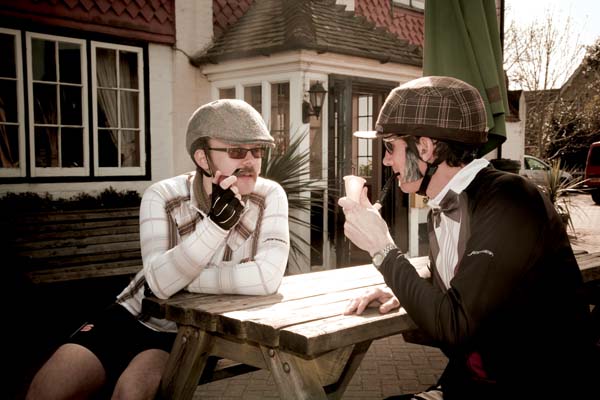
Unpleasant business
Yet again we were soon among the woodland and making our way with good speed towards Turners Hill. Up until this point our riding had been fuelled by a mixture of enthusiasm, excitement, and a good deal of our landlady Mrs Hudson’s fine fruitcake, but my medical training taught me that more substantive forms of replenishment were required and we determined to stop at The Crown public house — a fine establishment of some repute — to dispatch a course or two.
We sat in the sun, perusing the à la carte options, before I was assigned to commit our selections to the serving staff. I noticed a group of three ladies, not in the first flush of youth, who were examining our attire with undisguised disdain. Thinking they were out of earshot and, unaware I had followed them into the bar to place our order, they conversed about our appearance.
“I’m desperate, but I’m not that desperate,” laughed one of these mid-Sussex maids to the other members of her coven.
I had a good mind to admonish them. Firstly, their own deportment was far from the feminine ideal. Secondly, they were hardly the first chicks of spring. And thirdly, I have on good authority – not least from a committed study Holmes’s collection of Marie Claire - that women of a certain maturation should not contemplate wearing tight white denim trousers such as those I had just witnessed struggling at the seams.
But I kept my own council, my natural instincts as a gentleman - and an English gentleman no less – asserting their superiority over a more base tendency to upbraid these loose-tongued beldames. My appearance, I grant you, had an element of quantity over quality, but Holmes never looked anything other than a study in suavity. In any case, following the Irene Adler affair, Holmes had lost all interest in women. His twin mistresses now were solely his two-wheeled work and his pipe tobacco — little stirred his senses more than a day’s hard ride, or sucking on a shaft. Indeed I, more than most, knew just how much satisfaction he found in a rough shag.
You take the low road
Fully replenished, and my hot temper cooled by a glass or two of the finest local apple juice, we set off on the final 20 miles to our destination, Crowborough. First we skirted the edges of East Grinstead, and then found a cycle path directing us towards Forest Row. My reservations about taking to a gravelled track, rather than smooth asphalt, on skinny-wheeled machines were quickly dismissed. “Well, well,” said Holmes impatiently. “A good cyclist does not need a high road.”
As always he was right, and but for slight discomfort the off-road option proved a welcome respite from motorised traffic. Soon we were through Forest Row, passing the Brambletye Inn where Holmes and I had once lodged during our Adventure of Black Peter, and proceeding ever closer to our goal.
As I have already mentioned, I take great interest in the counties south of London, particularly when it comes to matters of hill and hillock, and I knew at least one, if not two, final challenges awaited us. I manipulated my bicycle’s controls so that I had assumed what Holmes calls la vitesse de grandmère and awaited my fate. A short rise to the church at Coleman’s Hatch was merely the aperitif for a singularly brutish climb — incongruously named Kidd’s Hill, for this was not child’s play — which brought us out into the fresh air atop the Ashdown Forest.
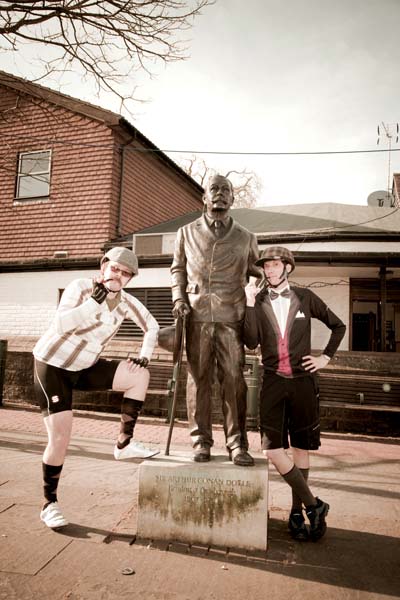
While I regained my full lung function a twin attack of leg cramp came upon me, but that was a far less fundamental obstacle than what was to appear over the horizon. Two members of Her Majesty’s constabulary had blocked the carriageway, and behind them we could discern the smoke of a burgeoning forest fire. “See, this is what happens when you play around with magnifying glasses,” I called out to Holmes’s in, I confess, a rather bad temper.
There was only one option left to us – a descent down Black Hill before yet another, truly final climb to the heart of Crowborough. What followed, for me, now seems little more than a dream. In a haze of exhaustion I pushed onwards and upwards while Holmes, his reserves of energy apparently little depleted from a day in the saddle, simply bounded out of sight up ahead.
My recollections only clear again when we had reconvened at Crowborough Cross, lighting our pipes to a statue of our ride’s muse, Sir Arthur Conan Doyle. His work has inspired much, not least a wonderful day in the saddle.
Stop! Pubs, grub and travel
No shortage of good food stops on this route – such is the choice you genuinely don’t have to plan anything - but here are the ones that caught our eye.
The Fox Inn, Bucks Green, Rudgwick, Horsham, West Sussex, RH12 3JP. Tel: 01403 822386. www.foxinn.co.uk
The Crown, East Street, Turners Hill, West Sussex, RH10 4PT. Tel: 01342 715218. www.thecrownturnershill.co.uk
Brambletye Hotel, The Square, Forest Row, East Sussex, RH18 5EZ. Tel: 01342 824144. www.brambletyehotel.co.uk
Trains
Getting to Farnham is no problem from that there London town (Waterloo), and there’s also a station at the bottom of Crowborough Hill which connects you directly to London Bridge. Both journeys take around an hour.
The route
Distance: 65 miles
Head south out of Farnham on Tilford Road all the way to Hindhead. We made an error and ended up on the A287 instead - don’t fret if that happens to you, it’s not a death trap.
Head straight over the crossroads (unless you want to pop in to see Undershaw) and halfway down the hill prepare for a secreted left turn down to Haslemere. Left again at the lights and follow out of the town. Watch out for a right turn a couple of miles down the road (you’ll see a sign welcoming you to West Sussex), take it, then follow signs for Plaistow, Loxwood, and Horsham. Head out of Horsham on the A281 Brighton Road but look out for St Leonard’s Road on your left. Then take Hammerpond Road on your right and follow signs to Handcross then Turners Hill.
Head out of Turners Hill towards East Grinstead. Go right at the first roundabout on the outskirts of East Grinstead, then left at the junction, right at the roundabout, and then through the housing estate toward the A22. Take the cycle path to Forest Row on your right just before you join the main road. At Forest Row go left at the roundabouts and follow the road to the church at Coleman’s Hatch.
Take a right as the road bends left, carry on up the hill, straight over the crossroads, a brief respite down hill, then prepare for the mother of a climb up Kidd’s Hill. Turn right at the top, then left down Black Hill, then right again up Marden’s Hill. Keep on climbing, and you’ll reach Crowborough Cross. One tip - don’t wait to find a sign for Crowborough – there are precious few.
SAVE UNDERSHAW
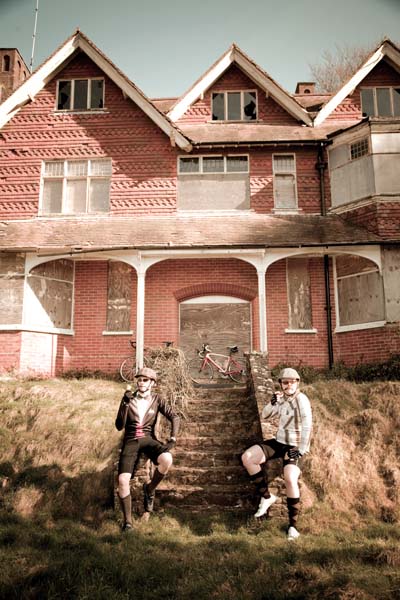
Sir Arthur Conan Doyle was born in Edinburgh on May 22, 1859 and studied medicine, working as a doctor until his writing career — particularly the stories about Sherlock Holmes — started finding popularity in the late 1880s.
Conan Doyle and his wife Louise had been living in South Norwood, London, but his literary success allowed them to move to the Surrey Hills, where it was suggested the clean air would greatly help Louise’s tuberculosis. Sir Arthur purchased four acres of land at the top of an undeveloped valley and then commissioned the building of Undershaw to his exact requirements — the Conan Doyle family finally moved in in 1897.
In fact, many of his greatest works were written at Undershaw, including The Hound of the Baskervilles and The Return of Sherlock Holmes, and visitors to the house included such cultural luminaries such as Bram Stoker, J. M. Barrie and Virginia Woolf. Conan Doyle left Undershaw in 1907, a year after Louise died, and moved to Windlesham Manor in Crowborough — now a care home — with his second wife, Jean.
Undershaw was sold in 1921 and it was run as a hotel until 2004 when it was purchased for development. In reaction to that the Undershaw Preservation Trust – one of whose patrons and sponsors is Sherlock TV series co-creator Mark Gatiss - was established in an attempt to keep the building as a period-style single dwelling, or even better, a museum dedicated to Conan Doyle and his work.
However, Waverley Borough Council granted the new owners permission to turn it into three flats and build a further five homes on the site. The Undershaw Preservation Trust has successfully sought a Judicial Review into Waverley Borough Council’s planning decision, and that will be heard in London’s High Court on May 23 — a day after what would have been Conan Doyle’s 153rd birthday.
Amazingly, an attempt to have Undershaw promoted to the top rank of protected buildings failed when a government report decided it was not architecturally notable, and Sir Arthur Conan Doyle was not of the same standing as Jane Austen or Charles Dickens. But then Dickens was never knighted, was he? Stick that in your pipe and smoke it, government inspector.
Website: www.saveundershaw.com
SHERLOCK CHIC
Fancy looking like Bikelock and Matson? Who wouldn’t? Our jerseys were provided courtesy of Jensen Cycling, the pedal-powered division of Milano Pro Sport, and each cost £48.95.
Holmes’s helmet was an Abus Metronaut, £79.99, courtesy of Zyro. And Matson’s helmet was a Casqu’ En Ville Carambar £79, courtesy of 50 Cycles. While we may jest about the get-up, we were actually very impressed with how all the kit performed – even on two sweaty berks like us.
(For those wanting the complete look, the socks came from M&S and the pipes from our local joke shop.)
www.jensencycling.com
www.zyro.co.uk
www.50cycles.com
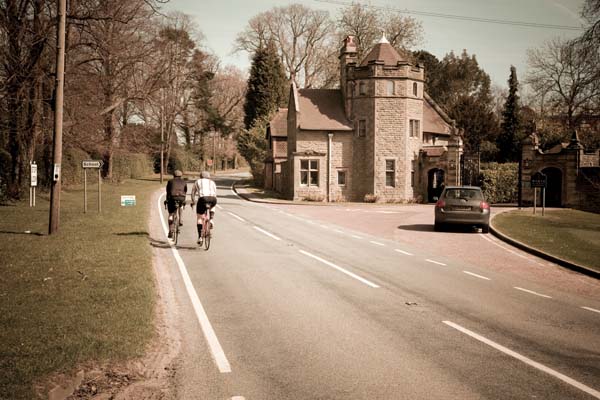

Thank you for reading 20 articles this month* Join now for unlimited access
Enjoy your first month for just £1 / $1 / €1
*Read 5 free articles per month without a subscription

Join now for unlimited access
Try first month for just £1 / $1 / €1

Nigel Wynn worked as associate editor on CyclingWeekly.com, he worked almost single-handedly on the Cycling Weekly website in its early days. His passion for cycling, his writing and his creativity, as well as his hard work and dedication, were the original driving force behind the website’s success. Without him, CyclingWeekly.com would certainly not exist on the size and scale that it enjoys today. Nigel sadly passed away, following a brave battle with a cancer-related illness, in 2018. He was a highly valued colleague, and more importantly, an exceptional person to work with - his presence is sorely missed.
-
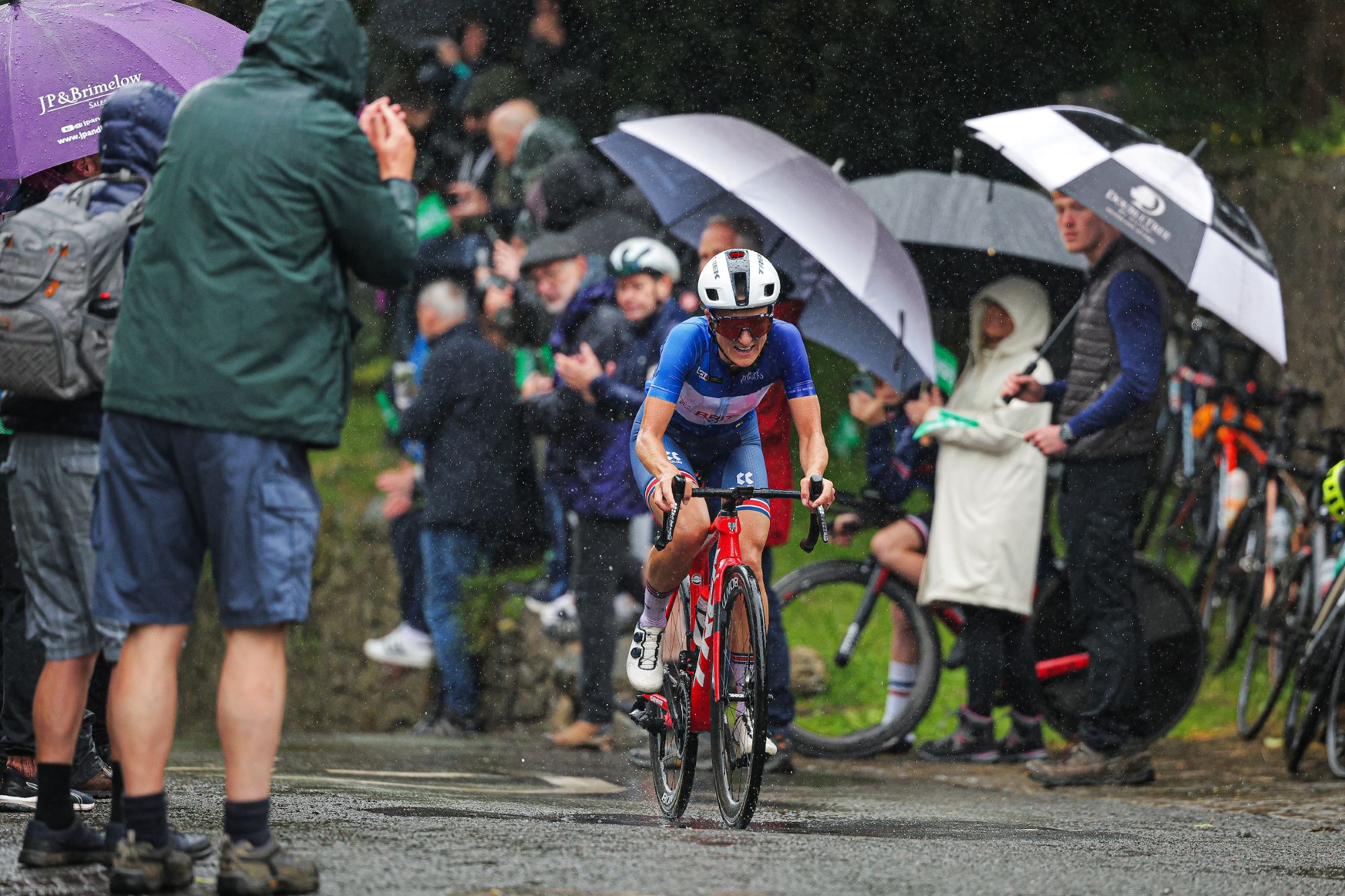 FDJ-Suez, SD Worx-Protime, Lidl-Trek confirmed for Tour of Britain Women as strong list of teams announced
FDJ-Suez, SD Worx-Protime, Lidl-Trek confirmed for Tour of Britain Women as strong list of teams announced18 teams set to take part in four-day WorldTour stage race
By Tom Thewlis
-
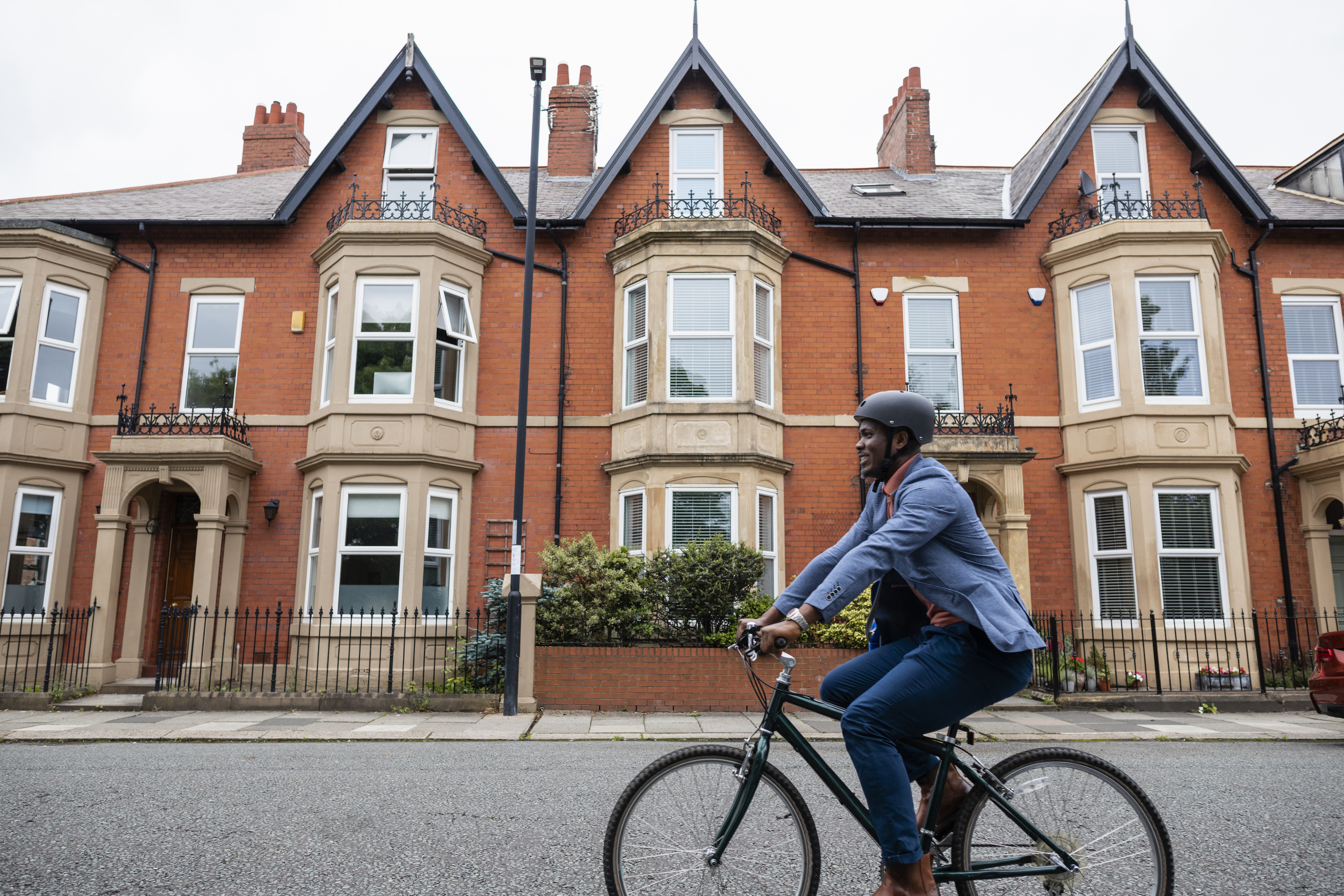 Cyclists could face life sentences for killing pedestrians if new law passed in England and Wales
Cyclists could face life sentences for killing pedestrians if new law passed in England and WalesReckless cycling currently carries a maximum two-year jail term
By Tom Thewlis